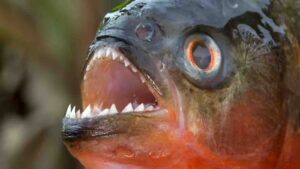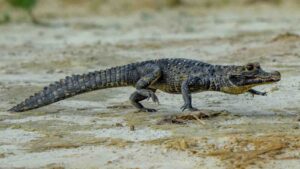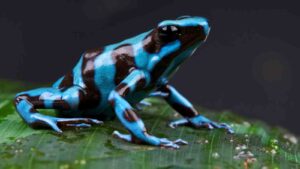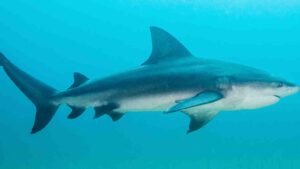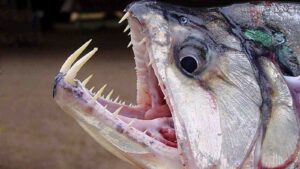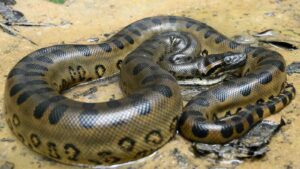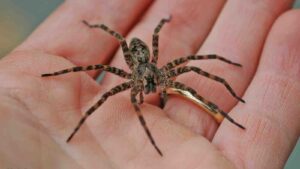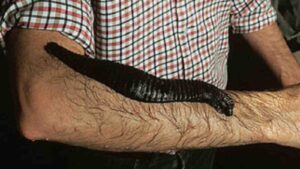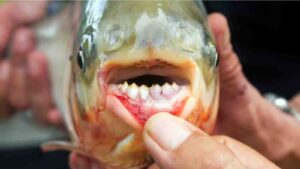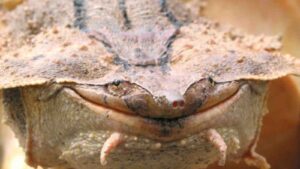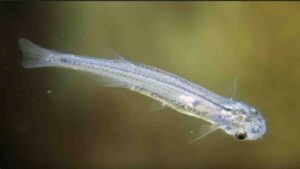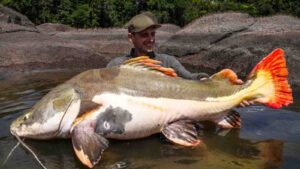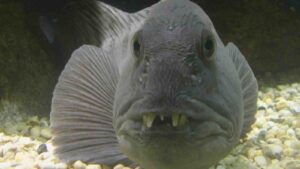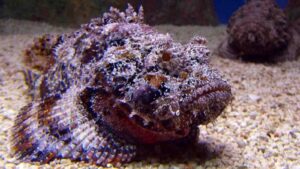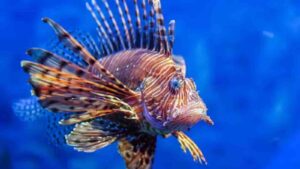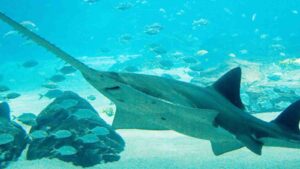Deadliest river monsters of Amazon
Summary
Top 20 deadliest river monsters of Amazon . The daily adventures that keep us away from our comfort zones are pretty exciting. Is there a fascinating place you would want to see even once in your entire life? Well, if […]
Top 20 deadliest river monsters of Amazon . The daily adventures that keep us away from our comfort zones are pretty exciting. Is there a fascinating place you would want to see even once in your entire life?
Well, if you are an adventurous soul, then you perhaps have the Amazon as one of the places you want to see. The Amazon is the largest river in the world. It’s a fascinating exotic place and home to some deadly creatures ever found on earth. Let’s explore some of the deadliest river monsters of the Amazon.
Video: Deadliest river monsters of Amazon
Piranha:
This is a popular fish known for their aggressiveness, and it’s native to South America. They roam in groups of up to a thousand, not to hunt but as a defense mechanism that allows them to stay alert and many to survive whenever they encounter a hungry enemy. When young, they are a source of food for different animals like turtles, caimans, and river dolphins.
One interesting fact about piranhas seen on television is that they habitually attack and rip flesh from animals that are much bigger than them. It’s believed they may even attack human beings.
Black caiman
It is the deadliest animal found anywhere in the world, especially where there is water. The blackcaiman dwells in the Amazon jungle and river. They are the largest alligator species on earth. It’s considered the apex predator in the Amazon forest. They are huge, smart, and can live up to between 50 and 80 years old. This modern-day animal feeds on marine animals, like catfish and piranhas, and occasionally snatches animals that draw too close to the waters, like pigs and dears. When you visit the Amazon, watch out for this cunning beast.
Video: Deadliest river monsters of Amazon
Poison dart frog
Meet the poisonous amphibian that is deadly both on land and underwater. This beautiful colored creature is as deadly as anything on the planet. Some reports say that the poison dart frog has enough toxicity that can kill up to 10 adult men; this must be the deadliest creature indeed!
It’s interesting though because poison dart frogs raised in captivity do not develop this poison defense mechanism. Great scientists still wonder how this creature acquired this poison in the first place.
Amazon River dolphin
Also known as Boto or Pink Dolphin. It’s a river monster that grows up to 9 feet long and weighs nearly 300 pounds; they can live up to 30 years. Dolphin’s most striking feature is their color; it begins as grey, becomes pale as it grows older, and adults are solid pink. Aggressive male dolphins appear much pinker than females. Various factors determine their colors, such as the sun, diet, and behaviors.
Pink dolphins have other unique features, like the unfused spine, which allows them to swim and turn their head and body from side to side.
Bull shark
You probably don’t expect to see something like this; sharks are typically found in the middle of the ocean, but this creature hangs out in the shallow, muddy waters of the Amazon.
Scientists consider it the deadliest and most dangerous shark found anywhere in the world.
One unique thing about this species is that it’s among the few sharks that can survive in both fresh and salty water. Though known to have been attacked by the black caiman, bull sharks do not have many fears and are known for feasting on one of their own while small.
Vampire fish
Maybe today’s best name would be vampire fish, also known as Payara. You will be surprised; the fish is ugly and has a terrifying face! The two giant teeth protruding from the bottom of its mouth give it a vampire appearance; maybe that’s the reason for its name.
Do you think you can survive being munched on by one of these big creatures? Well, maybe you could, but remember this big Amazon creature knows well how to prepare and win a battle.
Green anaconda
This is said to be one of the largest snakes in the world, with a record length of over 30 feet. These creatures have their eyes and nose on top of their heads, so when their entire body is submerged underwater, the green anaconda can still breathe and hunt.
This deadliest monster can eat anything within its hideout that breathes and bleeds, from fish to dogs and dears and even birds. Nobody would want to come face to face with a green anaconda, and especially when it’s hungry, you could be their meal!
Fishing spiders
Spiders are all over the world, but this Amazon River variety will leave you shocked. It’s fearsome and walks on water. It measures around 1.6 inches. Fishing spiders derive their name from their hunting habits. They walk on water and have spines on their legs that detect vibrations in the water, and when a fish gets closer, they smash. They release some poisonous paralyzing agent that liquefies their prey, and its done.Fishing spiders are also known to create a water bubble to dive in water easily. If you visit the Amazon, watch out for them.
Giant otter
This is my animal of the day; the giant river otter has cute mammal faces, but please don’t play around with them. They are apex predators on top of the food chain in the Amazon River. The giant otter typically dines on fish, but for a quick meal, it can feed on snakes and other animals that swim in the river.
Unfortunately, these Amazon River monsters are slowly vanishing, and some estimations report that these deadly and exceptionally smart animals could be as low as only five thousand.
Read More: Dumbest thing billionaire own with their money
Giant leech
It’s real and dangerous; this is a true picture of an Amazon creature, discovered when one was removed from a young girl’s nose in Peru. It sucks the mucous membranes of mammals.
If you’re wondering where the name Giant came from, it’s the large teeth it uses to soar into the orifices of mammals like the nose and other delicate parts that can’t just be mentioned here.
Despite its bad reputation, the leech’s saliva is proven to be beneficial and could have future health benefits. So maybe you shouldn’t judge it so harshly!
The pacu
Commonly known as the vegetarian piranha, the pacu’s scariest thing is their teeth, which shockingly look like humans. The blunt molars are used to crush nuts and grind plants. If you want to see a set of teeth like your own, then you may have to peel back the pacu’s lips. Pacus are among the deadliest creatures of the Amazon and should be looked out for while swimming or avoided swimming in the Amazon at all because this river monster can bite humans if they mistake you for food. If you thought they were vegetarians, now you know.
Mata mata turtle
Famously known for its camouflage and a neck that is longer than its vertebrae, the mata mata is one of the largest freshwater turtles. Because their jaws are physically unable to chew, it sucks up fish like a vacuum in a twinkle of an eye.
This turtle is sedentary; unlike other turtles, it only leaves the water to lay eggs. So maybe you can keep it as a pet because it can relatively thrive in a small aquarium due to its limited movement.
Candiru
Among the deadliest Amazon creatures, candiru is the most terrifying parasitic species of the freshwater fish. It is a small fish with bad habits and the most feared for its ability to eat your genitals. Since it’s coming into attention with science, this creature has created terrifying imaginations in people.
Candiru’s ability to enter the male genitals and lodge itself in with sharp barbs feasting on it from inside is a horror story enough to keep your legs tightly crossed, perhaps for days. Could this be a good enough reason for you not to pee in the Amazon River?
Redtail catfish
The red-tail catfish is widely distributed throughout the Amazon River. It grows up to 5 feet and weighs nearly 120 pounds. It is among the deadliest animals of the Amazon. However, the redtail catfish is not an aggressive hunter; they prefer to sit upriver rapids actively waiting for the current to deliver vulnerable prey to them.
This primarily carnivorous fish gains most of its food by feeding on other small fish and may also attack humans just in case it mistakes you for prey.
Wolffish
This is a terrifying and big fish of the Amazon River. Wolffish derive their name from the shape of their teeth. The front teeth are small and sharp, and behind them are molar teeth. These teeth are well designed to capture and crush the prey. It is the only fish capable of crushing hard shells. Large shells ingested by wallfish may later be released through waste.
Surprisingly, the wallfish loses its teeth at least once in a year for about three months during its spamming period to protect the eggs.
The jaguar
Quite different from the other animals on this list is the jaguar. Besides its popularity, it’s a scary and deadly animal that lives by the banks of the Amazon River. They’re natives of the Amazon rain forest but can also be found in Africa and Asia.
The tigers are loners, and you won’t see them in groups. Their hunting system is usually well calculated; they surprise their prey with sudden attacks. Their sharp, strong bite gives them a higher score over other monsters on this list.
Arapaima gigas
Also known as pirarucu, is a species of arapaima native to the basin of the Amazon River. Once believed to be the sole species in the genus, it is among the largest freshwater fish. The species is an obligate airbreather and needs to come to the surface regularly to gulp air. A. gigas is native to freshwater in the basin of the Amazon River; the paiche is considered an invasive species, affecting local native species and the ecosystem. It was first found in 1976 and presumably introduced from Peru after being washed out of a Peruvian fish farm by a flood.
Stonefish
They are sluggish, bottom-dwelling fish that live among rocks or coral and in mud flats and estuaries. Thickset fish with large heads and mouths, small eyes, and bumpy skins covered with wart-like lumps and, sometimes, fleshy flaps rest on the bottom, unmoving, blending almost exactly with their surroundings in form and color. They are dangerous fish. Difficult to see, they can, when stepped on, inject quantities of venom through grooves in their dorsal-fin spines.
Lionfish
The fish have enlarged pectoral fins and elongated dorsal fin spines, and each species bears a particular pattern of bold, zebra-like stripes. When disturbed, the fish spread and display their fins and, if further pressed, will present and attack with the dorsal spines. One of the best-known species is the red lionfish, an impressive fish sometimes kept by fish fans. It is striped with red, brown, and white and grows to about 30 cm long. The red lionfish is native to South Pacific reef ecosystems.
Electric eels
The electric eel is an elongated South American fish that produces a powerful electric shock to stun its prey, usually other fish. Long, cylindrical, scaleless, and usually gray-brown, the electric eel can grow to 2.75 meters and weigh 22 kg. The tail region constitutes about four-fifths of the electric eel’s total length, which is bordered along the underside by an undulating anal fin that is used to propel the fish. Despite its name, it is not a true eel but is related to the characin fish, which include piranhas and neon tetras.
Read More: 20 Shocking Discoveries of Giants You Won’t Believe Exist
Sawfishes
Also known as carpenter sharks, are a family of rays characterized by a long, narrow, flattened rostrum, or nose extension, lined with sharp transverse teeth, arranged in a way that resembles a saw. They are among the largest fish, with some species reaching lengths of about 7–7.6 m. They are found worldwide in tropical and subtropical regions in coastal marine and brackish estuarine waters, as well as freshwater rivers and lakes. The most distinctive feature of sawfish is their saw-like rostrum with a row of whitish teeth on either side of it.
Which one is the deadliest? Which topic do you want to see in our next video? Let us know in the comment section.
